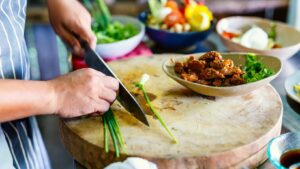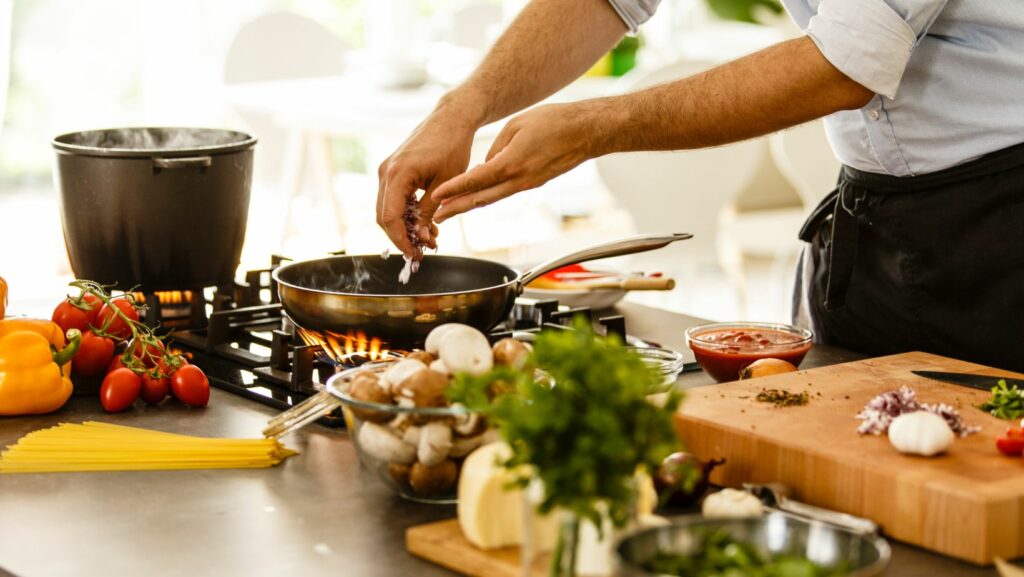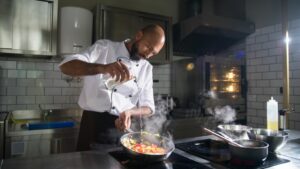In the heart of every home lies the kitchen, a place where culinary magic unfolds. But it’s also a place where potential danger lurks, with risks of burns, cuts, and food contamination. This article aims to arm you with essential cooking safety tips, transforming your kitchen into a safe haven where delicious meals come to life.
Whether you’re a seasoned chef or a beginner, safety in the kitchen is paramount. It’s not just about preventing accidents, but also ensuring that the food you serve is safe to eat. So, let’s embark on this journey of safe cooking, because a safe kitchen is the first step towards tasty, healthy meals.
Cooking Safety Tips
Why Cooking Safety Matters
Understanding the relevance of cooking safety provides assurance of routine kitchen activities. It helps protect individuals from potential hazards, increase efficiency, and maintain a sanitary cooking environment. Furthermore, appropriate safety practices in the kitchen help reduce food safety risks, such as cross-contamination and inappropriate food storage.
Let’s delve into why cooking safety has a significant role:
- Controls Risk of Injuries: Presence of sharp objects and hot liquids means a higher chance of accidental cuts, burns, and spillage incidents. Employing safety measures, such as using protective equipment and arranging objects appropriately, minimizes these risks.
- Ensures Food Safety: Proper handling and storage of food assets help prevent foodborne diseases. For instance, placing meat on the lowest refrigerator shelf prevents fluid drippage onto raw produce.
- Enhances Efficiency: An organized kitchen contributes to quicker, smoother meal preparation. Having utensils in their dedicated places and using appliances safely facilitates a smoother cooking process.
Common Kitchen Hazards to Avoid
Knowing and preventing common kitchen hazards offers an additional layer of security while cooking. Here are the primary concerns you should address:
- Burns and Scalds: Whether it’s from an oven or a boiling pot, burnt skin is one of the general kitchen accidents. Using oven mitts, avoiding reaching over hot areas, and turning pot handles away from the front of the stove helps to circumvent these situations.
- Cuts: Kitchen knives are indispensable yet dangerous tools. Ensuring they’re sharp, only using them for intended purposes, and proper storage can prevent cuts.
- Slips and Falls: Spilled liquid or food on the floor could easily cause someone to trip or slip. Immediate clean-ups and not leaving objects on the floor reduces the chance of such mishaps.
- Food Contamination: Mishandling of food can lead to microbiological contamination. Always wash hands before cooking, avoid mingling raw and ready-to-eat foods, and refrigerate leftovers promptly.
By addressing these common hazards, you’re making strides in creating a safer cooking environment. This practice goes beyond just assembling a meal; it’s about caring for your health, the health of those you cook for and having an ultimate culinary experience.
Essential Cooking Safety Tips

Addressing the most common hazards in the kitchen, this section of the article focuses on three crucial aspects of cooking safety: appropriate kitchen apparel, knife handling, and responding to potential fires.
Dress Appropriately for the Kitchen
Kitchen attire plays an instrumental role in preventing accidents in the bustling environment of a kitchen. Regardless of whether you’re a professional chef or an enthusiastic home cook, selecting the right attire serves as the first line of defense against spills, splatters, and fires. Ideally, wear clothes fitting snugly to avoid dangling sleeves interacting with the stove flame. Opt for materials that resist heat and flame, and protect your hands with mittens when dealing with pots and pans on the stove.
Knife Handling and Care
Knife-related accidents are startlingly common in the kitchen scenario, but the majority of these mishaps occur due to incorrect handling or poor maintenance. A sharp knife, although appearing menacing, actually makes for safer operation. Dull blades necessitate extra force, increasing the risks of slips and inadvertent cuts. Use a cutting board with a non-skid base for stability and control, grasping the knife by its handle, ensuring your fingers are safe from the blade.


